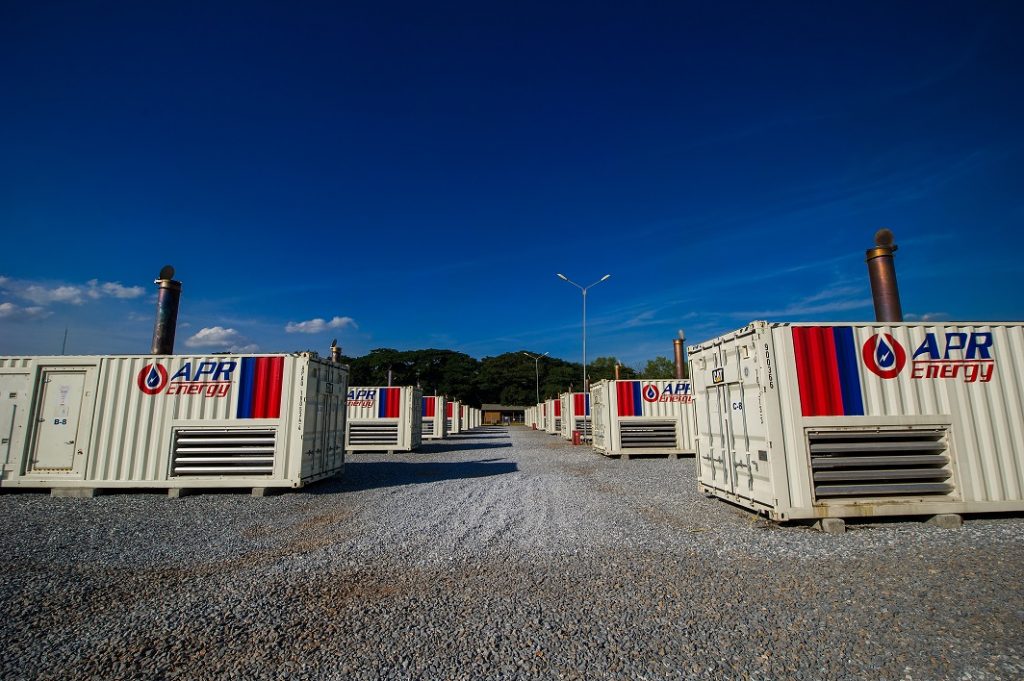Steve Chapman, Business Development Director EMEA at APR Energy points out that Southern Africa has long relied on the mining sector as a primary source of economic growth and stability. However, the recent shortfall of rain-dependent hydropower production, combined with the region’s aging and insufficient energy infrastructure, has severely hindered the energy output of the important economic engine that is mining – impacting jobs, development and quality of life.
Along the Zambezi River, for example, water levels at Kariba Dam – the world’s largest – had declined more than 36% by the end of October, according to media reports. In Zambia, power production from the dam was down from 1,100 MW to 475MW. In neighboring Zimbabwe, output fell from 750 MW to 475 MW. Moving into 2016, with an epic El Niño cycle continuing to batter the region, new reports raised concerns that hydropower production at the dam could soon be halted.
“The downstream impact on the mining industry has been significant and well documented. Some of Zambia’s mines had to shut down or scale back operations after electricity to the country’s copper producers was cut by 30%”, states Chapman. “Across the Zambezi River, Zimbabwe’s mine operators have been similarly affected, and the downstream impact surely will be felt by its national economy, which relies on mining for approximately 15% of its gross domestic product.”
While rain will eventually fall and water levels will rise, the more systemic problem of an inadequate power infrastructure will continue to hamper the mining industry, particularly in places like Namibia, Tanzania, Zambia and Zimbabwe, where the national electrification rates range from just 13.5% to 41.5%, according to UNESCO.
“Clearly, the lack of reliable electricity is unacceptable in an industry where safety is paramount and lives depend on uninterrupted power for essential processes like ventilation and dewatering. Similarly, a constant flow of electricity is required to ensure that smelters don’t go cold, allowing molten metals to solidify inside capital-intensive processing equipment.
The shortage of electricity in Southern Africa is, unfortunately, peaking at a time when the sector still suffers from lower commodity prices resulting from the recent global economic downturn, leaving many mines without the financial resources to install their own permanent power plants.”
Chapman argues that mobile turnkey power “is a readily available and affordable solution that could eliminate the industry’s vulnerability to an unreliable supply of electricity. Unlike permanent power sources, this solution uses modular and easily transportable power plants to provide mine operators with dependable, dedicated electricity, when and where they need it, in just 30 to 90 days. These plants, featuring state-of-the-art gas turbine technology and diesel- and gas-powered reciprocating engine generators, are ideally suited for mines, whether they are competing for power on the national grid or in a remote location awaiting the future development of transmission and distribution infrastructure.”
An added benefit is that these “pop-up” power plants are scalable from 10 to 100 MW or more, providing the flexibility to ramp up based on a mine’s evolution. “While many temporary power providers supply equipment on a purely dry rental basis, APR Energy makes it easier for mining customers by handling all installation, operation, maintenance and manpower, allowing customers to focus their attention and resources on what they do best – extracting valuable minerals from the earth. Our fleet of equipment also offers fuel flexibility, allowing customers to utilise standard fuels such as diesel and natural gas as well as alternatives such as liquid propane gas and kerosene, which can greatly reduce the cost of generation.
Whether the mine currently is connected to the grid and requires reliable back-up power, or if the operation lacks grid access and needs a dedicated source of electricity, mobile turnkey power can be an ideal solution since it requires minimal capital investment. Customers simply provide the site and fuel, avoiding long-term financing and credit issues, and they begin to pay only once the electricity is flowing.”
He concludes: “We know that cost is a foremost consideration for any business. Therefore, it is understandable that mine operators in Southern Africa may hesitate at the idea of paying for fast-track power – whether as a supplemental or stand-alone solution – when they are accustomed to inexpensive, plentiful hydropower. However, the region’s mine operators ultimately must weigh the significant benefits of self-powering through reliable and safe mobile generation solutions against the heavy cost of lost production and revenue.”











